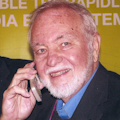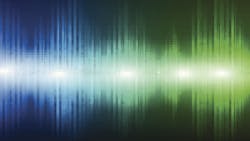This file type includes high resolution graphics and schematics when applicable.
With all the wireless design activity going on these days, it makes me wonder just how many engineers are actually educated in wireless principles anymore. Not many, I suspect. From what I have seen of EE education, the curricula are still based on classical circuit theory, basic devices, some linear, and a massive dose of digital, along with microcontrollers and related software programming. No radio theory.
For this reason, I thought I would explain one basic wireless concept that might help illustrate how wireless works: free space path loss (FSPL). If you are working on an Internet-of-Things (IoT) or other wireless product, this may be helpful. And you won’t have to learn Maxwell’s equations.
FSPL is the attenuation a radio signal experiences on its way from transmitter (Tx) to receiver (Rx). It is usually expressed in dB. Radio signals in the VHF, UHF, microwave, and millimeter-wave frequency bands travel in a straight line that we call line of sight (LOS). In general, the attenuation is proportional to the square of the distance (d) between the Tx and Rx. The attenuation is also proportional to the frequency of operation (f).
FSPL determines how far you can transmit reliably for a given factors such as transmitted power(Pt), received power (Pr), transmitter antenna gain (Gt) receiver antenna gain (Gr), and receiver sensitivity (R). The power is in watts, of course, and antenna gains are power ratios. Antenna gains are unity if you assume an isotropic source (spherical radiation pattern). If you use a dipole or its equivalent, the power ratio is 1.64. Both antennas should have the same polarization.
All these factors are summed up in what is known as the Friis formula:
Pr = PtGtGrλ2/16π2d2
Distance (d) is given in meters and wavelength is also in meters. Remember λ = 300/fMHz .
The key takeaways from this formula are that the power at the receiver gets smaller as distance is increased and as the wavelength gets shorter. In other words, for a given transmit power and fixed antenna gains, the signal at the receiver gets smaller at the higher frequencies. The higher the frequency, the greater the FSPL. Higher frequencies are great, as they offer lots more bandwidth and antennas are shorter. The range is more limited, however.
The Friis formula is messy to handle, so a more convenient form has been created using decibels.
FSPL (dB) = 32.45 + 20log(f) + 20log(d)
The frequency (f) is in MHz and distance (d) is in kilometers.
As an example, what is the FSPL for a 2.4 GHz signal at 100 meters?
FSPL(dB) = 32.45 + 20log(2400) + 20log(0.1) = 32.45 + 67.6 – 20 = 80 dB
Now that you know the path loss, you can consider some other factors like transmitter power (Pt). You can express it in dBm ( milliwatt reference). Assume a power of 400 mW.
dBm = 10log (Pt/1mW) = 10log(400) = 26 dBm
Knowing the path loss and the transmitter power, you can figure the received power. Pr will also be in dBm.
Pr = Pt – FSPL = 26 – 80 = –54 dBm
Now let’s add the antenna gains. The formulas assume isotropic antennas. This gives an antenna gain (G) of 1. A dipole or its equivalent has some gain—specifically, a 1.64 power ratio that translates to a gain of 2.15 dB. If both transmitter and receiver use a dipole, the calculation goes like this:
Pr = Pt + Gt + Gr – FSPL = 26 + 2.15 + 2.15 – 80 = –49.7 dBm
The missing quantity in all this is receiver sensitivity (R). This is a specification of all wireless receivers, and is the smallest signal the receiver can process. It is given in – dBm. Assume a value of -98 dBm. As you can see, since -47 dBm is greater power level than -98 dBm, the receiver will get enough power with a good margin.
Using the transmit power, receiver sensitivity, and antenna gains, you can compute the maximum path loss for this combination.
FSPL (max) = Pt + Gt + Gr – R = 26 + 4.3 – (- 98) = 128.3 dB
From this figure you can rearrange the FSPL formula and calculate the maximum possible range (d) for this situation. The math is left to you but the range is 25.8 km.
For any given design, you can use this process to get a first approximation how your system will work. You can play around with the factors and optimize your design. Just remember we are using LOS FSPL. There are no obstacles between transmit and receive antennas. If you introduce walls, trees, etc., you will need to increase path loss accordingly. Reflections and multipath, diffraction, and scattering are also not accounted for. Attenuation estimates for these factors are available, but beyond the scope of this blog. For a first estimate, just be sure you have extra margin (say 20%) to ensure a reliable link.
Looking for parts? Check out SourceESB.
This file type includes high resolution graphics and schematics when applicable.
>> Website Resources
.. >> Library: TechXchange
.. .. >> TechXchange: Radio Design 101
About the Author

Lou Frenzel Blog
Communications Technology
Click here to find more of Lou's articles on Electronic Design.
